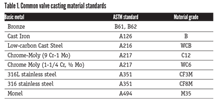NAM Monday Economic Report – January 5, 2015
Growth in manufacturing activity slowed somewhat in December, according to the Institute for Supply Management (ISM). The headline purchasing managers’ index (PMI) dropped from 58.7 in November to 55.5 in December, its lowest level in six months.
In general, the economy in the United States continues to fare better than the economies of other countries. Among other things, this can be seen in foreign exchange markets, with the U.S. dollar reaching an 11-year high against major currencies on Friday. Weaknesses abroad can be illustrated by current events in China and Europe. In December, manufacturers in China reported their first contraction in activity since May, with the HSBC China Manufacturing PMI dropping from 50.0 in November to 49.6 in December. Meanwhile, demand and output remained quite sluggish in Europe, even as the Markit Eurozone Manufacturing PMI improved a bit from 50.1 to 50.6.
These economic data diverge from U.S. data. For instance, third quarter real GDP was revised sharply higher, increasing by an annualized 5.0 percent instead of the earlier estimate of 3.9 percent growth. This was the fastest quarterly pace in 11 years. Recent surveys—including the NAM/IndustryWeek survey—indicate relative optimism moving forward. The Dallas Federal Reserve Bank also noted better production data in December and an improved outlook for the next six months in its district, even as lower petroleum prices were dampening new orders within the energy sector.
Other data released last week were also encouraging. Manufacturing construction spending edged marginally higher in November, rising to its highest level since June 2009. More importantly, dollars devoted to construction in the sector have risen sharply year-over-year, up 21.1 percent since November 2013. This suggests that manufacturing leaders are more confident in making investments in their companies, mirroring the stronger employment index seen in the ISM report discussed above. Moreover, the public is also more upbeat. The Conference Board’s consumer confidence index rebounded in December, even as it remained below its October peak. Lower gasoline prices have likely helped to improve perceptions about the current economic environment, outweighing lingering worries about labor market and income growth.
This week, the focus will largely be on jobs. We will get new employment numbers for December on Friday, and they are expected to extend the strong numbers seen in November. Nonfarm payrolls will probably grow by more than 200,000 for the eleventh straight month, with manufacturing hiring consistent with the almost 15,000 average jobs observed year-to-date. Another highlight will be new trade numbers as the weak international environment continues to keep export growth at a sluggish pace. Beyond these figures, other data points to look for this week include new reports on consumer credit, factory orders and a regional manufacturing survey from the Philadelphia Federal Reserve Bank.
Chad Moutray is the chief economist, National Association of Manufacturers.
RELATED CONTENT
-
Grappling with the World's Complex Energy Transition Through an ESG Lens
With a long list of contributing factors, the world is barreling headlong into an energy transition that’s full of challenges, opportunities and lofty net-zero goals.
-
Which Gate Valve is Best for Today's Waterworks Systems?
A historical perspective may provide the answer.
-
Additive Manufacturing of Pressure Equipment
How manufacturers can design and produce PED-compliant equipment using additive manufacturing.








 Unloading large gate valve.jpg;maxWidth=214)

